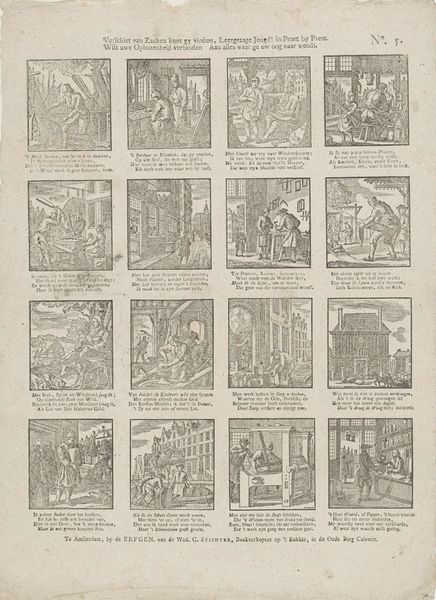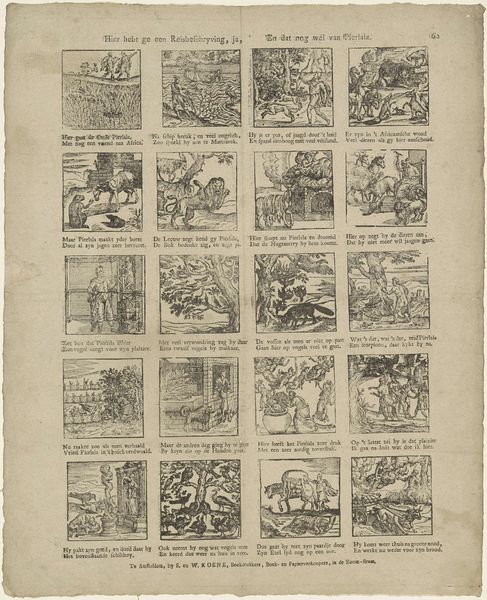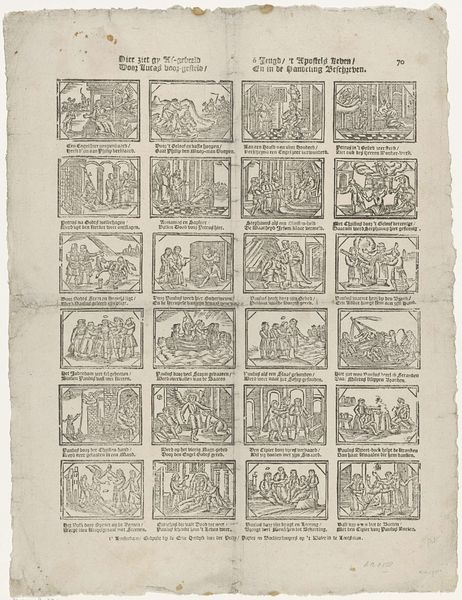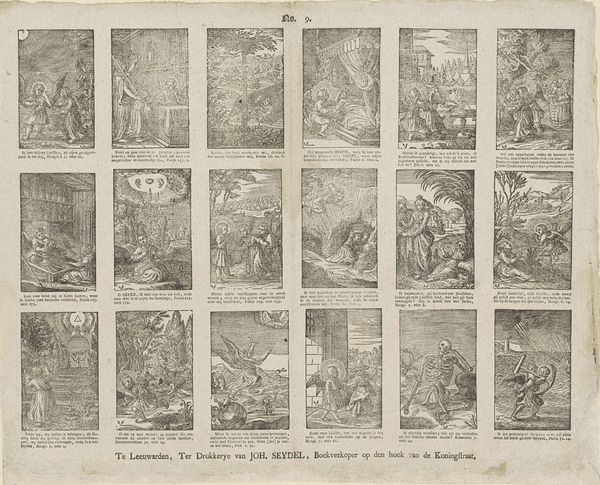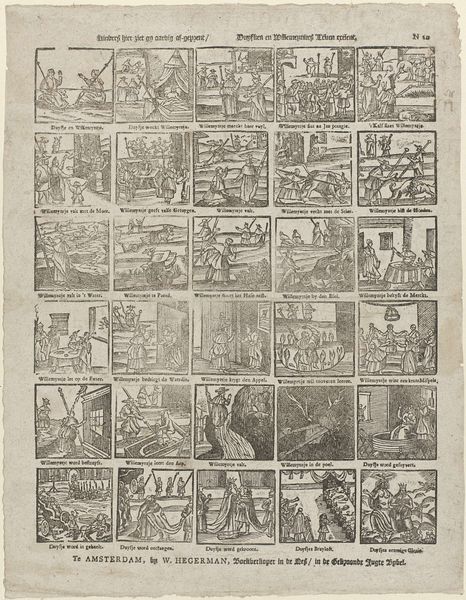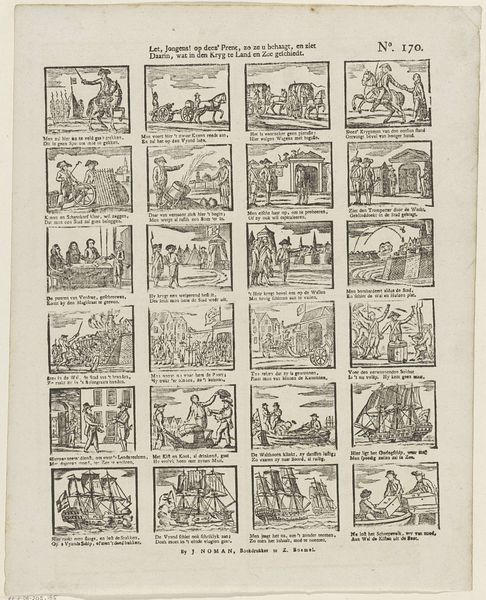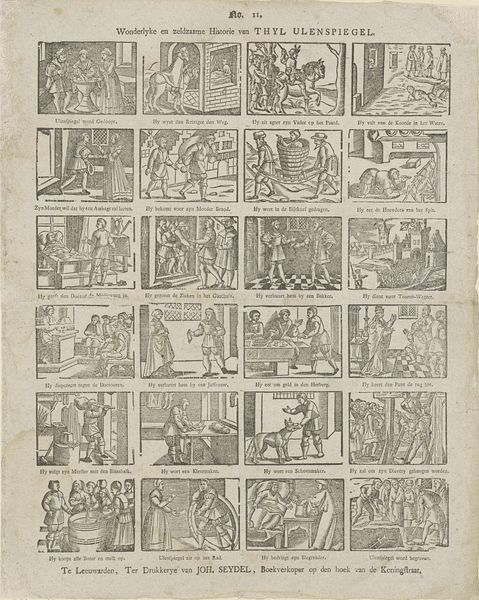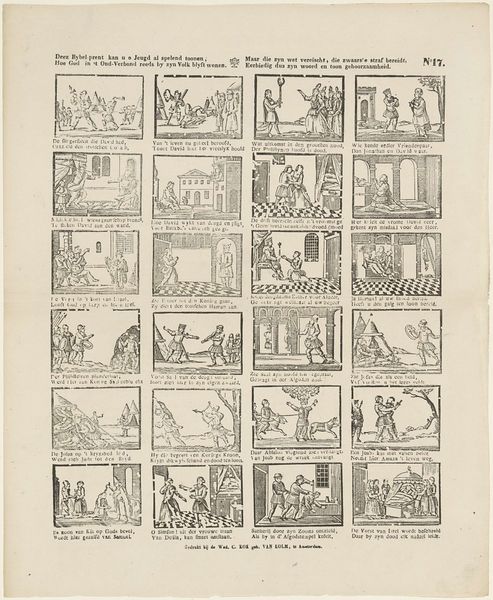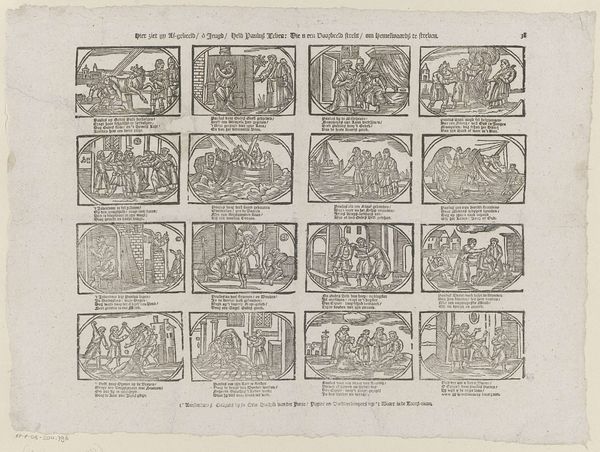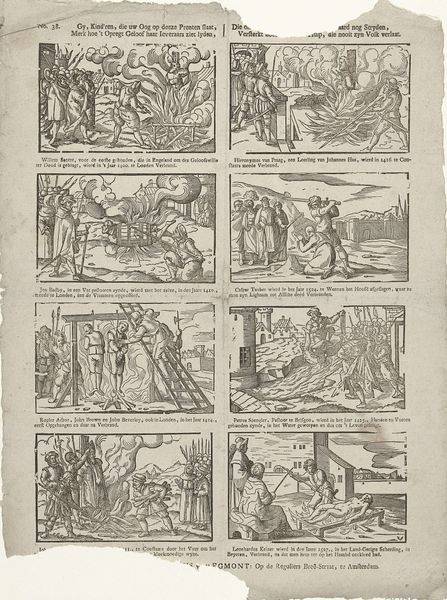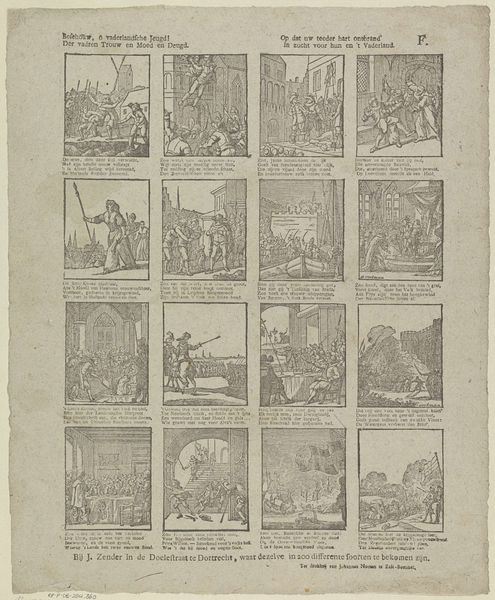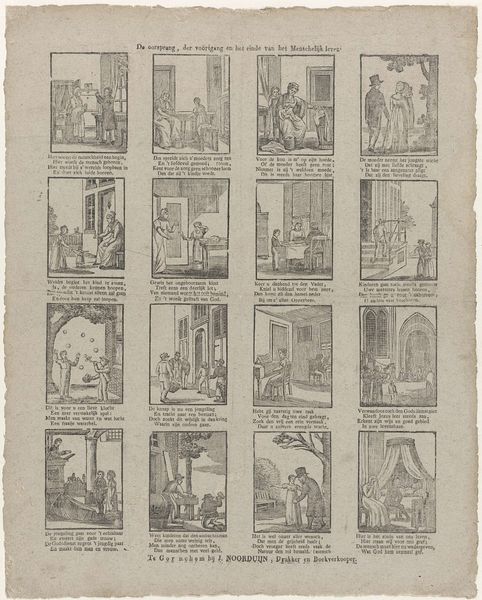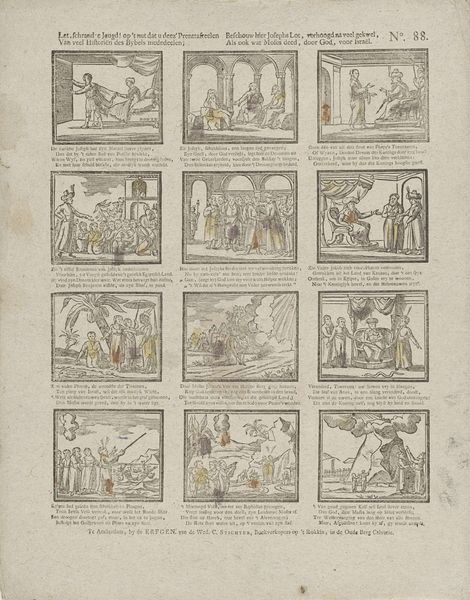
Hier, lieve kind'ren, heb ik eens, / Voor u iets fraais, iets ongemeens, / Zo gy op deeze prent studeerd, / 'k weet zeker dat ge er wat uit leerd 1814 - 1830
0:00
0:00
print, engraving
#
narrative-art
# print
#
figuration
#
northern-renaissance
#
engraving
Dimensions: height 392 mm, width 325 mm
Copyright: Rijks Museum: Open Domain
Curator: What strikes you first about this engraving? Its overall feeling? Editor: There’s a rigid, almost pedagogical feel to it. The composition is very structured, compartmentalized even. Stark, high-contrast light… Curator: Indeed. What we have here is a print from 1814-1830, titled "Hier, lieve kind'ren, heb ik eens, / Voor u iets fraais, iets ongemeens, / Zo gy op deeze prent studeerd, / 'k weet zeker dat ge er wat uit leerd,” by Barend Koene. Look closely at the materiality; an engraving means cutting into a hard surface—in this case likely metal—to hold ink. Think of the labour involved in producing such multiples in Koene’s print shop. The intended audience for these images…children perhaps? How does this contextual information reframe your response? Editor: It reinforces that didactic aspect. Each panel feels almost like a freeze-frame of a morality tale, doesn't it? Consider the Northern Renaissance stylistic leanings – the clean lines, attention to detail within constraints of form. It presents narratives not as dramatic experiences, but as points of moral instruction. Are those religious scenes depicted within the panels, you think? Curator: Undoubtedly. The composition, being segmented as it is, lends itself to breaking down complex theological teachings to be delivered sequentially. You can follow this person in one square, move your eye to the next, read their title at the bottom. Editor: The text accompanying the scenes provides a narrative thread, linking image and idea to embed values in the observer, very cunning use of combined arts I think. Koene, the book printer is imprinting more than paper I feel. The deliberate control over form creates that precise, formal aesthetic you’d want to imbue in its audience. Curator: And in its material presence, as well, an affordable means of distributing moral education far and wide… the democratization of piety. The image itself serves as a testament to broader accessibility afforded to society from the book printer. Editor: I agree. This piece reveals how much meaning can be embedded in form and the means of its distribution, especially how it facilitates a message. Curator: It gives a powerful sense of the social dynamics operating with and by such printed ephemera.
Comments
No comments
Be the first to comment and join the conversation on the ultimate creative platform.
